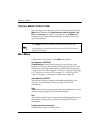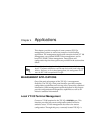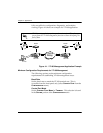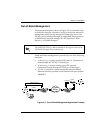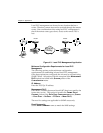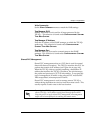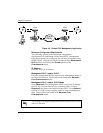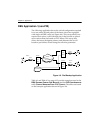
Chapter 4. Applications
61200275L1-1 TSU IQ+ User Manual 4-5
Trap Manager IP Address
Enter the IP address of the SNMP manager to which the TSU IQ+
sends traps. This selection is found under C
ONFIGURATION
>
S
YSTEM
>T
RAP
M
GR
O
PTIONS
.
Trap Manager Port
Enter the TSU IQ+ port used to transmit traps to the SNMP
manager. This selection is found under C
ONFIGURATION
>
S
YSTEM
>T
RAP
M
GR
O
PTIONS
.
In-Band Management
The ADTRAN TSU IQ+ supports three modes of in-band
management using the frame relay structure of PVCs. These
modes are local, shared, and dedicated PVC management. All three
types support complete SNMP management as well as Telnet
capabilities.
Local PVC Management
Local PVC management refers to a PVC created between the
TSU IQ+ and the frame relay router on the DTE (
V.35
)interfaceof
theTSUIQ+(seeFigure4-3onpage4-6). Thistypeofmanagement
is ideal when local management is needed but an ethernet
connection is not available. To support this type of management,
all traffic on the selected PVC must be RFC 1490 encapsulated,
noncompressed IP traffic.
The local PVC is sent out of theWAN serial port of the router as
normal WAN traffic and is terminated in the TSU IQ+. Since the
TSU IQ+ responds to Inverse ARP, it is not necessary to set up a
static route in the router. The router will discover the IP address
automatically; however, it will be necessary to set up a local PVC
between the router and the TSU IQ+. Accomplish this by setting a
value (between 16 and 1007) for the DTE management DLCI on the
TSU IQ+ to a value not used by the frame relay network.
All PVC-based in-band management traffic must be noncompressed IP
and use RFC 1490 encapsulation.






